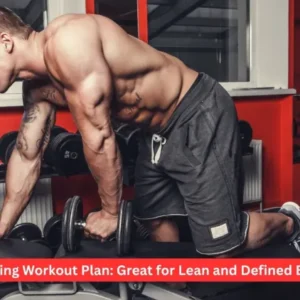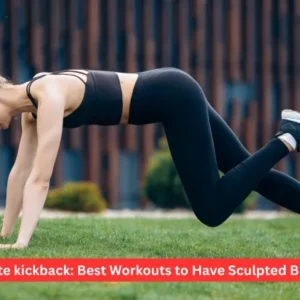Grab a kettlebell and strengthen your abs with these exercises
Want the secret to running a faster 5K or setting a new squat PR? It’s all about core strength. Your abdominal muscles do much more than look good at the beach—they stabilize your pelvis and spine during all movements, maintain proper posture, support bodily functions, and keep your internal organs adequately positioned.
You’re practically inviting lower back problems, compensation injuries, and full-body misalignment without adequate core strength. So, while leg day and long runs seem more appealing, dedicating gym time to core work is essential for maintaining a healthy, injury-free body.
Traditional sit-ups and bicycle crunches certainly have their place, but effectively strengthening all your abdominal muscles requires resistance training and movement in multiple planes. Kettlebell exercises are the perfect tool for this challenge, adding welcome variety to your tired routine of planks and crunches.
Spread out your mat and attempt these 9 kettlebell exercises for abs to ignite your core. Some might not look like traditional ab work at first glance, but trust me—you’ll feel your abdominals engaging throughout.
Understanding Your Abdominal Muscles
These muscles include the rectus abdominis (the “six-pack” muscles) on top of your abdominal wall in the center of your torso; the transverse abdominis, the deepest layer beneath the rectus abdominis; the internal and external obliques along the side of your torso; and the pyramidal, a small triangular muscle in your lower pelvis.
9 Kettlebell Exercises for Abs: Core Workout
1. Kettlebell Dead Bug
Though often prescribed for beginners to develop core awareness and stability, the dead bug is also a typical warm-up for serious powerlifting sessions. Adding kettlebell exercises transforms this basic movement into a serious core challenge.
Lie on your back with a light-to-moderate kettlebell beside you to perform the deadbug. Grab the kettlebell by the handle and position your arms directly over your shoulders, with the bell centered above your chest. Bring your legs into a tabletop position—knees bent over your hips and shins parallel to the floor. Slowly lower your right heel to the ground with an engaged core. a neutral spine and steady kettlebell. Return to the starting position, then lower your left heel similarly. Complete 10–12 reps on each side.
For an additional challenge, position the bell above your head and perform the exercise, or move it toward the floor behind you as you lower each leg, bringing it back up as your heels rise.
If maintaining a neutral spine is complex or you feel lower back strain, use a lighter kettlebell workout or try without weight.
2. Kettlebell Suitcase Carry
Ever carried heavy grocery bags or lugged a suitcase through an airport? You unknowingly got an excellent ab workout that functionally engages all your core muscles.
For the suitcase carry, place a heavy kettlebell at your side. Squat down to grab it with your right hand, then stand tall with feet hip-width apart. Maintaining rolled-back shoulders, an engaged core, and a tall spine, stroll across the room with the kettlebell at your side. Don’t let the weight pull your spine out of alignment. After about 20 steps, turn around and walk back. Squat to drop the kettlebell, switch to your left hand, and repeat.
Increase difficulty by using a heavier kettlebell or transform it into a farmer’s carry by holding kettlebells in both hands.
If you struggle to maintain alignment without leaning, choose a lighter weight.
3. Kettlebell Goblet March
This simple yet effective exercise targets your deep core muscles and benefits runners of all levels.
For the goblet march, place a moderate to heavy kettlebell before you. Squat down and grasp both sides of the handle with your hands. Stand tall with feet hip-width apart, shoulders back, and the kettlebell centered at chest height, positioned a forearm’s length from your body. With an engaged core and neutral spine, slowly lift your right foot off the ground. Bring your right knee to hip level, creating a 90-degree angle with your leg. Lower your right foot and repeat with the left. Continue with 10–12 reps per side.
The heavier the kettlebell, the greater the challenge. Ensure your form remains solid—avoid forward-rolling shoulders or an arched lower back. If either occurs, choose a lighter kettlebell.
4. Kettlebell Woodchop
While your kettlebell won’t chop firewood, it will undoubtedly ignite an intense burn in your abdominals, especially your obliques.
Stand with a moderately heavy kettlebell before you for the woodchop, feet hip-width apart. Squat down and grasp the handle with both hands. Set your hips back, lean your torso slightly forward, and position the kettlebell outside your left hip. Engage your core, drive your hips forward, and lift the kettlebell diagonally from your left hip to your right shoulder. Return to the starting position and repeat 10–12 reps before switching sides.
Increase difficulty by holding the top of the handle and swinging the kettlebell across your body diagonally. If you experience lower back pain, use a lighter kettlebell or kneel with one knee on the ground and one foot planted in front.
5. Plank Row
The plank is already one of the best exercises for core stability and endurance. Once you’ve mastered the standard form, add kettlebells and rows to push into more challenging territory.
For the plank row, place two moderately heavy kettlebells in front of you. Get into a hands-and-knees position and grasp the kettlebell handles. With neutral wrists, step back into a push-up position, aligning your hips and spine with your torso slightly diagonal to the floor. Keep your core engaged and hips square. Slowly lift the right kettlebell, bringing your right wrist toward your right hip. Lower it back down with control. Complete 10-12 reps, then repeat on the left side.
Try a renegade row alternating between right and left arms, or choose heavier kettlebells when the exercise becomes easy.
If maintaining square hips is difficult, exercise on your knees instead of your toes. Use one kettlebell at a time for wrist stability issues, and keep your other hand on the floor.
6. Kettlebell Goblet Squat
While the kettlebell goblet squat appears to be a leg exercise, it actually intensely activates all your core muscles.
To perform the goblet squat, hold a moderate to heavy kettlebell a forearm’s length from your chest center (hold either the handles or the bell). Push your hips back, bend your knees, and lower your tailbone toward the floor while keeping your core engaged and spine neutral. At the bottom of your range, squeeze your glutes and stand tall. Repeat for 10—12 reps.
Increase the challenge with a heavier kettlebell. If your shoulders fatigue before your abs or legs, try a lighter weight. Sitting on a chair or bench rather than lowering yourself to full depth can help you improve your squat form.
7. Kettlebell Swing
As one of the most popular kettlebell exercises, the swing offers a low-impact, high-intensity movement that builds strength and power in your posterior chain. Your abs work overtime during this exercise, making it an excellent addition to your routine.
Place a moderately heavy kettlebell in front of you for the kettlebell swing. Stand with feet shoulder-width apart, hips pushed back, knees bent, torso forward, and grasp the top of the kettlebell handle with both hands. Engage your core and swing the kettlebell back between your legs. Squeeze your glutes, drive your hips forward, and swing the kettlebell to chest level. Return your hips and allow the kettlebell to swing between your legs again. Repeat for 10-15 reps.
Remember, hip drive is essential—your arms shouldn’t actively lift the weight. Let your hips and lower body power the movement while your core stabilizes your body throughout the swing’s range of motion.
If controlling the movement is difficult, use a lighter kettlebell. Choose a heavier weight if the kettlebell naturally swings higher than chest level.
8. Kettlebell Windmill
Are you bored with Russian twists and side planks? Windmills target your obliques while building stability and strength in all your abdominal muscles.
For the windmill, stand with a light to moderate kettlebell and feet slightly narrower than shoulder-width. Raise your right arm, engage your lats, and roll your right shoulder back. Turn both feet 45 degrees to the left. Looking up at the kettlebell, engage your core and shift your right hip back, allowing your left knee to bend slightly. Slide your left arm along the inside of your left leg, reaching toward the floor. At your maximum range, slowly return to the starting position. Complete 10-12 reps, then repeat on the other side—remembering to angle your feet away from the kettlebell.
The windmill takes practice to master, so don’t hesitate to reduce your range or use a lighter weight when first starting.
9. Kettlebell Turkish Get Up
The Turkish get-up is the most challenging exercise we’ve saved for last—it will effectively work your abs and virtually every other muscle. Only attempt the whole movement if you already have a solid fitness foundation and have practiced each component separately. Consider working with a certified personal trainer to ensure proper form and safety.
For the Turkish get-up, place a light to moderate kettlebell to your right side while lying on your right side on a mat. With an underhand grip, grasp the kettlebell handle, roll onto your back, and press the kettlebell into the air with your right hand. Keep your eyes on the kettlebell and your right arm straight throughout. The bell should rest on your right wrist with your straightened arm aligned with your shoulder. Bend your right knee, placing your right foot on the floor while extending your left leg. Position your left arm slightly angled away from your body with your left hand on the floor.
Engage your core and lift your head, shoulders, and upper back off the floor, resting on your left elbow with your right arm straight. Push up to sleep on your left hand. Squeeze your glutes and hamstrings to press your hips up, keeping your left leg extended. Bend your left leg and place your left knee under your left hip, with your left hand and right foot still on the floor. Engage your right oblique and slowly lift your left hand, coming to a kneeling position with squared hips.
Press your right foot into the ground and stand, bringing your left leg forward so both feet are together. Keep your right arm locked straight. Step back with your left leg, lower your left knee, and return to kneeling. Slowly lower your left hand to the ground, eyes still on the kettlebell. Lift and extend your left leg, keeping your right knee bent and your foot pressed down. Lower your hips to the mat, bend your left elbow to the floor, and slowly lower your shoulders and head to return to your starting position. Perform 3-5 reps, then switch sides.
For beginners, master each segment individually. Start by lifting your head and shoulders to your elbow before returning to the floor. Once comfortable, add the next movement—pushing up to your hand—before returning to start. Gradually incorporate more of the sequence as you build confidence and perfect your form.







